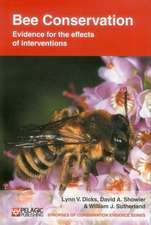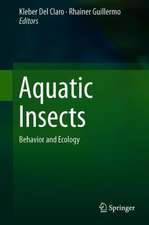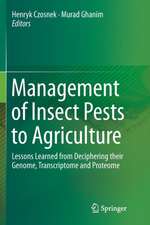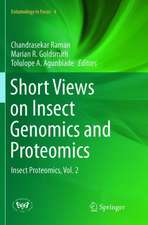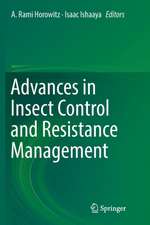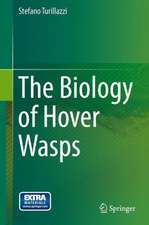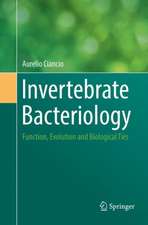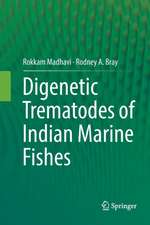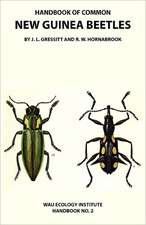Trapping and the Detection, Control, and Regulation of Tephritid Fruit Flies: Lures, Area-Wide Programs, and Trade Implications
Editat de Todd Shelly, Nancy Epsky, Eric B. Jang, Jesus Reyes-Flores, Roger Vargasen Limba Engleză Paperback – 22 sep 2016
| Toate formatele și edițiile | Preț | Express |
|---|---|---|
| Paperback (1) | 961.41 lei 6-8 săpt. | |
| SPRINGER NETHERLANDS – 22 sep 2016 | 961.41 lei 6-8 săpt. | |
| Hardback (1) | 967.88 lei 6-8 săpt. | |
| SPRINGER NETHERLANDS – 22 oct 2014 | 967.88 lei 6-8 săpt. |
Preț: 961.41 lei
Preț vechi: 1172.45 lei
-18% Nou
Puncte Express: 1442
Preț estimativ în valută:
184.01€ • 191.38$ • 154.20£
184.01€ • 191.38$ • 154.20£
Carte tipărită la comandă
Livrare economică 13-27 martie
Preluare comenzi: 021 569.72.76
Specificații
ISBN-13: 9789402406269
ISBN-10: 9402406263
Pagini: 653
Ilustrații: XV, 638 p. 49 illus., 24 illus. in color.
Dimensiuni: 155 x 235 x 34 mm
Greutate: 0.9 kg
Ediția:Softcover reprint of the original 1st ed. 2014
Editura: SPRINGER NETHERLANDS
Colecția Springer
Locul publicării:Dordrecht, Netherlands
ISBN-10: 9402406263
Pagini: 653
Ilustrații: XV, 638 p. 49 illus., 24 illus. in color.
Dimensiuni: 155 x 235 x 34 mm
Greutate: 0.9 kg
Ediția:Softcover reprint of the original 1st ed. 2014
Editura: SPRINGER NETHERLANDS
Colecția Springer
Locul publicării:Dordrecht, Netherlands
Cuprins
TABLE OF CONTENTS Short I. INTRODUCTION.- 1.1 Fruit Fly Alphabets.- II. LURES AND TRAPS.- 2.1 Pheromones, Male Lures, and Trapping of Tephritid Fruit Flies.- 2.2 History and Development of Food-Based Attractants.- 2.3 Plant Odors as Fruit Fly Attractants.- 2.4 Interactions between Tephritid Fruit Fly Physiological State and Stimuli from Baits and Traps: Looking for the Pied Piper of Hamelin to Lure Pestiferous Fruit Flies.- III. ECOLOGY AND DETECTION.- 3.1 Trapping to Monitor Tephritid Movement: Results, Best Practice, and Assessment of Alternatives.- 3.2 Fruit Fly Invasion: Historical, Biological, Economic Aspects and Management.- 3.3 Fruit Fly Detection Programs: The Potentials and Limitations of Trap Array.- 3.4 Spatial Analysis of Tephritid Fruit Fly Traps.- 3.5 Using Molecules to Identify the Source of Fruit Fly Invasions.- 3.6 Modeling Trapping of Fruit Flies for Detection, Suppression, or Eradication.- IV. ATTRACT AND KILL.- 4.1 Priorities in Formulation and Activity of Adulticidal Insecticide Bait Sprays for Fruit Flies.- 4.2 Recent Developments and Applications of Bait Stations for Integrated Pest Management of Tephritid Fruit Flies.- 4.3 Male Annihilation: Past, Present, and Future.- 4.4 Mass trapping for fruit fly control.- V. PHYTOSANITARY PROGRAMS AND REGULATIONS.- 5.1 Integrating Tephritid Trapping into Phytosanitary Programs.- 5.2 Trapping Related to Phytosanitary Status and Trade.- VI. CODA.- 6.1 The Complexities of Knowing What It Is You Are Trapping.
Textul de pe ultima copertă
Tephritid fruit flies are among the world’s most notorious pests of commercially important fruits and vegetables, and with ever-increasing human and product movement and accelerated global warming, these flies will have an even greater impact in the future. Information gathered through trapping is crucial to understanding their ecology, controlling their populations, and developing international trade agreements. This volume is the first devoted exclusively to trapping tephritid fruit flies and adopts a comprehensive and global approach in describing key empirical and theoretical issues.
The book consists of four major sections, which cover lures and traps, ecology and detection, attract-and-kill methods of control, and phytosanitary programs and regulations. Within this broad perspective, the authors focus on a diverse array of basic and applied topics, including the role of pheromones, food-baits, and plant odors as trap lures, dispersion and invasion biology, modeling detection programs, evaluation of bait stations, mass trapping, and male annihilation as control measures, and the role of trapping data in developing trade regulations. Representing 15 countries, the authors bring rich experience to the subject and ably describe current status as well as historical perspective and future direction of the selected topics. Useful manuals exist, but this book offers a much broader, academic, and international perspective to the core principles of tephritid trapping. The book’s audience will include researchers, teachers, animal and plant health administrators, and policy makers. Given the breadth of material covered and the exhaustive citation listing along with the increasing agricultural threat posed by tephritid fruit flies, this book will be an extremely valuable reference on the subject for many years to come.
The book consists of four major sections, which cover lures and traps, ecology and detection, attract-and-kill methods of control, and phytosanitary programs and regulations. Within this broad perspective, the authors focus on a diverse array of basic and applied topics, including the role of pheromones, food-baits, and plant odors as trap lures, dispersion and invasion biology, modeling detection programs, evaluation of bait stations, mass trapping, and male annihilation as control measures, and the role of trapping data in developing trade regulations. Representing 15 countries, the authors bring rich experience to the subject and ably describe current status as well as historical perspective and future direction of the selected topics. Useful manuals exist, but this book offers a much broader, academic, and international perspective to the core principles of tephritid trapping. The book’s audience will include researchers, teachers, animal and plant health administrators, and policy makers. Given the breadth of material covered and the exhaustive citation listing along with the increasing agricultural threat posed by tephritid fruit flies, this book will be an extremely valuable reference on the subject for many years to come.
Caracteristici
Other books do not treat fruit fly trapping in a comprehensive manner; no other volume deals with topics ranging from the workings of baits and traps through invasion, dispersal and detection through international commerce Other books often rely heavily on users of trapping technology and not the innovators of such technology; this volume assembles the world’s leaders in research in this field Authors are encouraged to provide critical assessment of techniques, ideas, etc. Thus, volume will present past and current trends but is NOT intended as a review volume. Thus, volume will (ideally) offer readers opportunity to learn how leaders in the field assess existing data and formulate new research avenues Includes supplementary material: sn.pub/extras

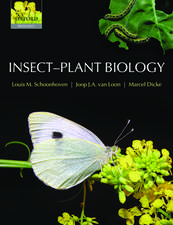
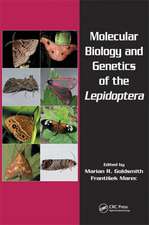
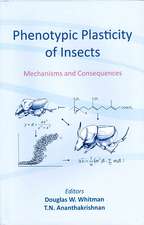
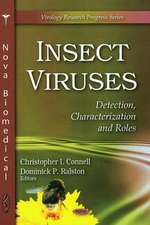
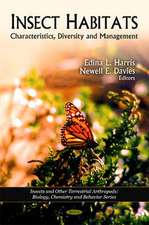
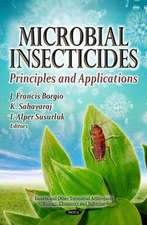
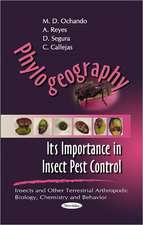
![Huber's New Observations Upon Bees the Complete Volumes I & II: [A Stand-Alone Novel] (Splendor and Ruin, Book I)](https://i1.books-express.ro/bt/9781614760566/huber-s-new-observations-upon-bees-the-complete-volumes-i-ii.jpg)




